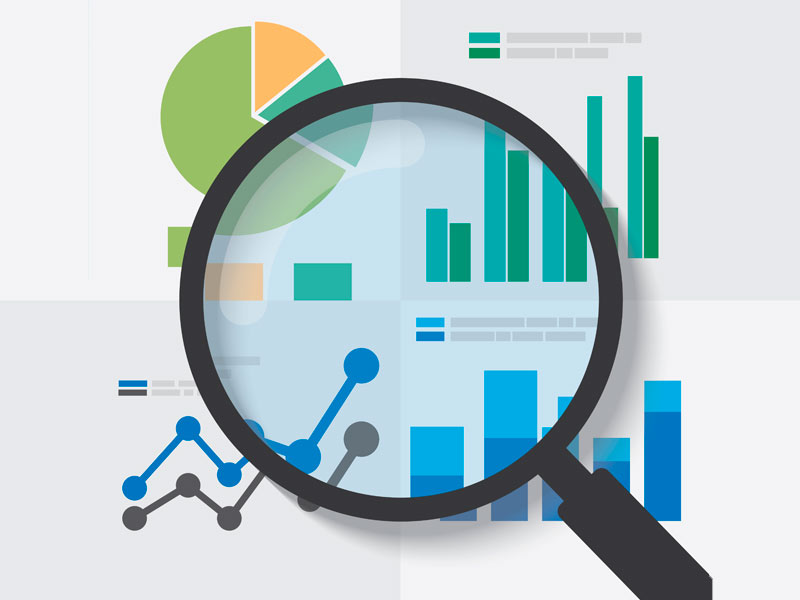In today’s dynamic business landscape, understanding consumer behavior and market trends is crucial for companies aiming to stay ahead of the competition. Quantitative market research serves as a powerful tool for businesses to gather data-driven insights, make informed decisions, and drive strategic growth initiatives.
Introduction to Quantitative Market Research

Quantitative market research involves the systematic collection and analysis of numerical data related to consumer preferences, purchasing behavior, market trends, and other relevant factors. Unlike qualitative research, which focuses on understanding motivations and perceptions through open-ended questions, quantitative research relies on structured surveys, experiments, and observational studies to quantify responses and draw statistical conclusions.
Understanding Quantitative Research Methods
1. Surveys
Surveys are one of the most common methods used in quantitative market research. They involve presenting respondents with a set of predetermined questions aimed at gathering specific information about their opinions, preferences, and behaviors.
2. Experiments
Experiments allow researchers to manipulate variables and observe their effects on consumer behavior. By controlling various factors, businesses can test hypotheses and measure the impact of different marketing strategies or product features.
3. Observational Studies
Observational studies involve the systematic observation of consumer behavior in natural settings. Researchers carefully document actions, interactions, and decision-making processes to uncover patterns and insights.
Importance of Quantitative Marketing Research
Quantitative market research provides businesses with valuable data-driven insights that drive decision-making processes across various departments. From product development and marketing strategies to customer segmentation and pricing optimization, quantitative research informs critical business initiatives and helps mitigate risks.
Steps Involved in Conducting Quantitative Marketing Research
- Defining Objectives: Clearly outline the goals and objectives of the research study.
- Designing the Study: Develop a structured research design and methodology.
- Sampling: Select a representative sample of the target population.
- Data Collection: Collect data through surveys, experiments, or observational methods.
- Data Analysis: Analyze the collected data using statistical techniques and software tools.
Tools and Techniques Used in Quantitative Market Research
- Online Surveys: Platforms like AIM Research and Google Forms facilitate the creation and distribution of online surveys.
- Questionnaires: Structured questionnaires help standardize data collection and ensure consistency in responses.
- Statistical Analysis Software: Tools like SPSS and R are used for data analysis and interpretation.
Advantages
- Scalability: Quantitative research allows for large-scale data collection and analysis.
- Objectivity: Statistical analysis minimizes bias and subjectivity in decision-making.
- Generalizability: Findings from quantitative studies can often be applied to broader populations.
Limitations
- Lack of Context: Quantitative research may overlook the contextual nuances and motivations behind consumer behavior.
- Sampling Bias: Inaccurate sampling techniques can lead to biased or unrepresentative results.
- Limited Insights: Quantitative data alone may not provide a comprehensive understanding of consumer preferences and attitudes.
Real-World Applications of Quantitative Market Research
Quantitative marketing research is widely used across industries for:
- Market segmentation and targeting
- Product testing and optimization
- Pricing analysis and strategy development
- Brand tracking and performance measurement
Examples of Successful Market Research Studies
- A beverage company conducts a quantitative survey to assess consumer preferences for new flavors.
- An e-commerce platform uses A/B testing to optimize website layout and improve user experience.
- A healthcare provider conducts a quantitative study to measure patient satisfaction and identify areas for improvement.
Integrating Qualitative and Quantitative Market Research
By combining qualitative insights with quantitative data, businesses can gain a more holistic understanding of consumer behavior and market dynamics. Qualitative research provides depth and context, while quantitative data offers statistical validation and scalability.
Future Trends
Advancements in technology, such as artificial intelligence and machine learning, are expected to reshape the landscape of quantitative marketing research. Automated data collection methods, predictive analytics, and real-time tracking capabilities will enable businesses to gather insights faster and more accurately than ever before.
Case Studies: Breaking New Ground with Quantitative Market Research
Case Study 1: Driving Sales with Consumer Insights
A global retail chain leveraged quantitative market research to identify shifts in consumer behavior. By conducting a comprehensive survey across multiple regions, the company discovered a growing preference for sustainable products. Armed with this data, they restructured their inventory to feature eco-friendly items, resulting in a 20% increase in sales over six months. This data-driven approach not only enhanced customer satisfaction but also positioned the company as a leader in sustainability.
“Data-driven decisions are the foundation of modern retail success. Understanding what your customers value today can transform your business tomorrow.” — Jane Doe, Retail Industry Analyst
Case Study 2: Enhancing User Experience with A/B Testing
A major e-commerce platform employed quantitative research in the form of A/B testing to optimize its website layout. By analyzing user behavior on two different versions of their homepage, they determined which design led to higher conversion rates. The winning version resulted in a 15% increase in overall sales and a 25% improvement in user retention. This simple yet effective experiment underscores the power of quantitative methods in enhancing the user experience.
“A/B testing is like a magnifying glass for your customer journey. It reveals the small tweaks that can make a big impact.” — Sarah Nguyen, Digital Marketing Influencer
Case Study 3: Innovating Product Development with Customer Feedback
A software company sought to refine its product by analyzing feedback through quantitative market research. After surveying over 10,000 users, they identified specific features that were in high demand. By prioritizing these features in the next update, the company saw a 30% reduction in churn rate and an increase in user satisfaction scores. This strategic use of consumer data significantly improved the product’s appeal.
“Great products are built on data-backed insights. Listening to what users need and quantifying it transforms development priorities.” — Mark Thompson, Tech Entrepreneur
Quotes and Tweets from Industry Influencers
“Quantitative market research is the GPS for modern businesses—if you’re not using it, you’re flying blind.” — @TechInsider
“Success is 50% intuition and 50% data. Without the numbers to back you up, you’re making educated guesses at best.” — @MarketingMaven
“When it comes to consumer insights, qualitative shows you the ‘why,’ but quantitative gives you the ‘how much’—and that’s where the power lies.” — @ResearchGuru
Ethical Considerations
Responsible conduct in quantitative market research involves ensuring participant confidentiality, obtaining informed consent, and adhering to data protection regulations. Researchers must also consider the potential impact of their findings on society and take measures to minimize harm.
Challenges and Best Practices
- Challenge 1: Ensuring sample representativeness and minimizing selection bias.
- Challenge 2: Designing surveys and experiments that yield reliable and valid results.
- Best Practice: Pilot testing and validation of research instruments to identify and address potential issues.
Conclusion
In conclusion, quantitative market research plays a pivotal role in helping businesses understand consumer behavior, identify market opportunities, and make data-driven decisions. By leveraging advanced research methods and analytical techniques, companies can gain a competitive edge and drive sustainable growth in today’s dynamic marketplace.
For a firsthand experience of how quantitative market research can transform your business strategies, we invite you to request a demo from AIM Technologies. Explore our innovative solutions and unlock valuable insights to propel your business forward.
FAQs
Is quantitative market research better than qualitative research?
- Both quantitative and qualitative research methods have their strengths and limitations. While quantitative research provides statistical validation and scalability, qualitative research offers depth and context. The choice between the two depends on the research objectives and the nature of the questions being addressed.
How can businesses ensure the reliability of quantitative research findings?
- Businesses can enhance the reliability of quantitative research findings by using rigorous sampling techniques, validating research instruments, and conducting statistical analysis with care. Transparency and replication of research methods also contribute to the credibility of findings.
What are some common pitfalls to avoid in quantitative market research?
- Common pitfalls in quantitative market research include sampling bias, questionnaire design flaws, and misinterpretation of statistical results. Researchers should exercise caution and seek peer review to mitigate these risks.
How can businesses stay updated with emerging trends in quantitative market research?
- Businesses can stay updated with emerging trends in quantitative market research by attending industry conferences, participating in professional networks, and subscribing to relevant publications and research journals. Engaging with experts and thought leaders can also provide valuable insights into evolving methodologies and best practices.
What role does quantitative market research play in the era of big data?
- In the era of big data, quantitative market research serves as a crucial tool for extracting actionable insights from vast amounts of structured and unstructured data. By applying advanced analytics techniques, businesses can uncover hidden patterns, trends, and correlations that inform strategic decision-making and drive competitive advantage.




